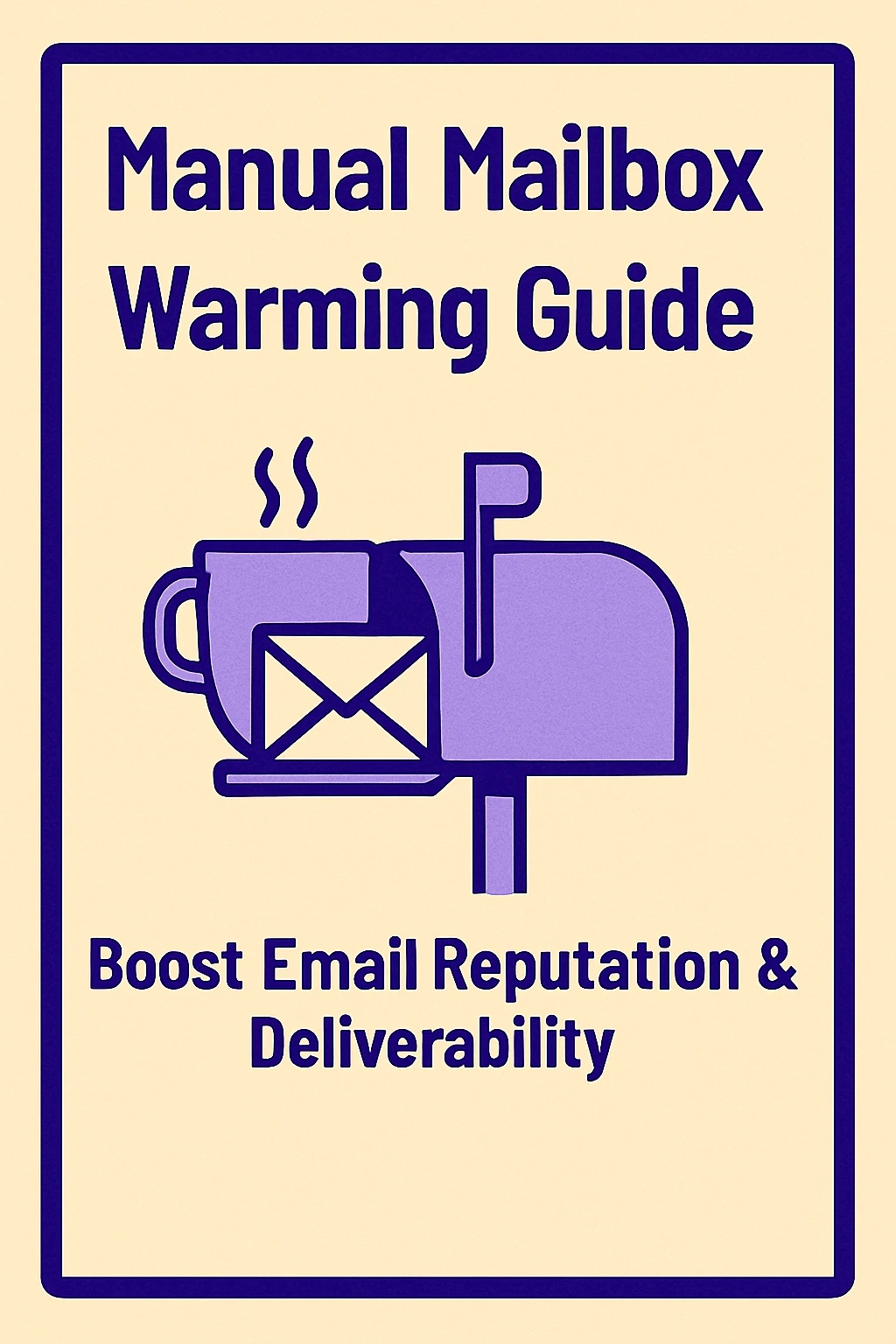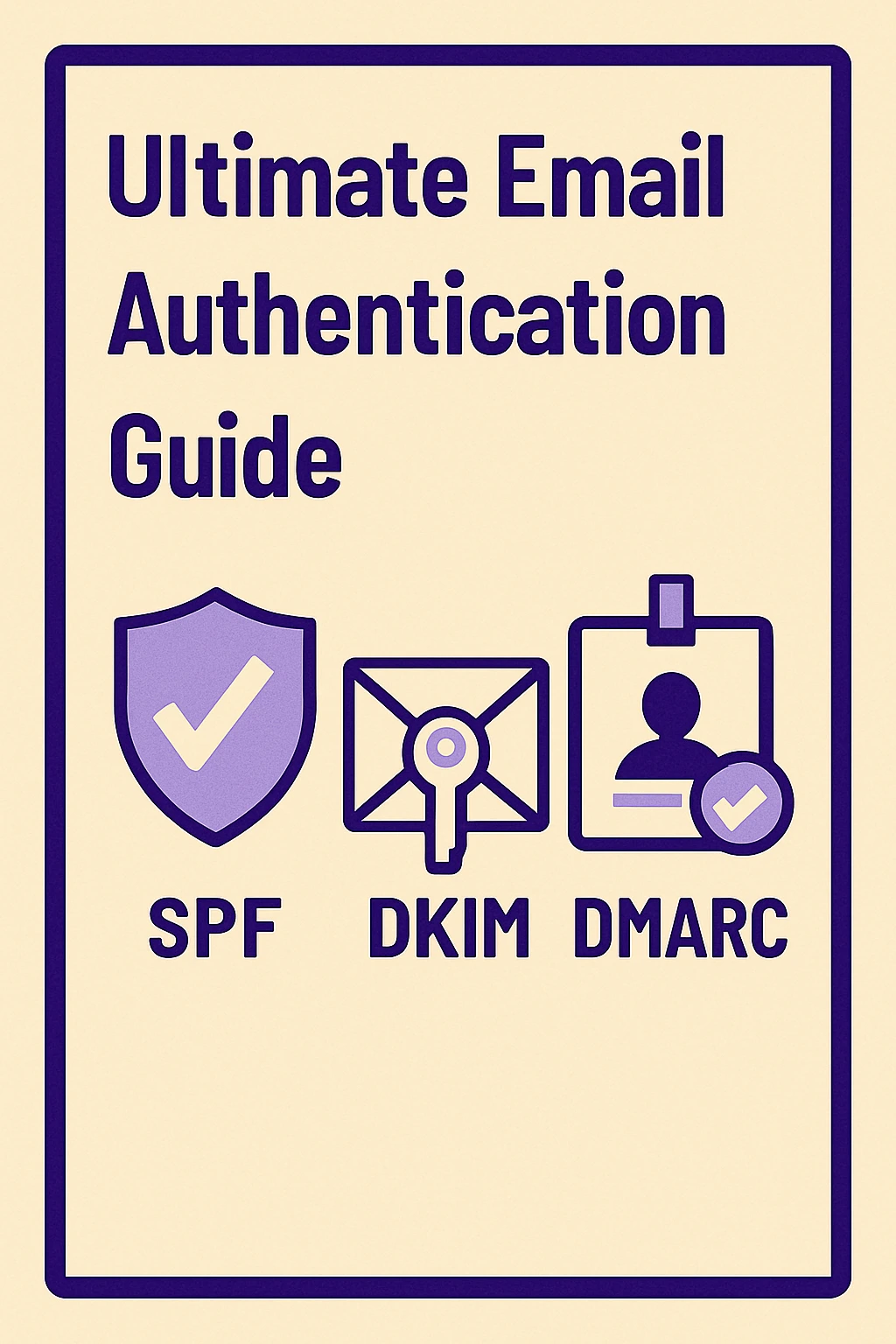Top Email Warm-Up Tool for GSuite: Expert Picks 2025
If you're looking for the best email warm-up tool for GSuite in 2025, you've come to the right place. Whether you're a solopreneur, run an agency, or manage high-volume outreach, warming up your email is crucial to reaching your audience and avoiding the spam folder. In this guide, we compare the top-rated warm-up tools tailored for GSuite so that you can pick the right one based on your goals.

If you're looking for the best email warm-up tool for GSuite in 2025, you've come to the right place. Whether you're a solopreneur, run an agency, or manage high-volume outreach, warming up your email is crucial to reaching your audience and avoiding the spam folder. In this guide, we compare the top-rated warm-up tools tailored for GSuite so that you can pick the right one based on your goals.
Let’s explore why GSuite users need warm-up tools, what features to consider, and which tools lead the pack this year.
Why Do GSuite Users Need an Email Warm-Up Tool?
Importance of Email Warm-Up for Cold Outreach
If you’re using GSuite for cold email campaigns, your first concern should be email deliverability for GSuite. New or inactive GSuite email accounts are flagged easily by Google’s spam filters. Without warming up, your messages will likely end up in the spam folder, no matter how carefully you craft your email.
Warming up your email builds email domain health, helping Google recognize you as a trusted sender. This improves your inbox placement, which is the goal of any cold email strategy.
GSuite Limitations and Spam Triggers
GSuite (now part of Google Workspace) has daily sending limits and strict rules against sudden spikes in activity. Cold emailing from a fresh GSuite account without a warm-up often triggers spam flags, reducing your reach. Even seasoned domains can get blacklisted if you don’t manage your sender's reputation carefully.
How Warming Up Helps Sender Reputation
Warm-up tools help by slowly increasing your email activity, mimicking real user behavior. This trains Google’s algorithms to trust your GSuite account. Consistent sending and positive interactions (like replies and reads) improve your email reputation and keep your messages in your recipients’ inboxes.
Risks of Not Using a Warm-Up Tool
Skipping the warm-up process can lead to serious problems, including:
- Poor Deliverability: Your emails land in spam or never get delivered.
- High Bounce Rates: Invalid addresses due to no reputation check.
- Blacklisting Issues: Your domain/IP could end up on blacklists, killing your campaigns.
If you care about GSuite account safety, using an email warm-up tool is non-negotiable.
What to Look for in a GSuite Email Warm-Up Tool?
Key Features Checklist

Before picking the best email warm-up tool for GSuite, make sure it has these must-have features:
- Integration with GSuite/Gmail API: Ensures seamless access to your account.
- AI-based Warm-Up Automation: Uses smart logic to adjust sending patterns.
- Custom Email Sending Schedules: So you stay in control of frequency.
- Detailed Reporting Dashboards: Track performance, inbox placement, and more.
- Large Warm-Up Network: A bigger pool of warm-up contacts means better results.
GSuite Compatibility & Setup Ease
You also need to ensure the tool offers:
- OAuth and IMAP/SMTP Integration: For secure and reliable connectivity.
- Multi-Account Support: Useful for agencies managing many GSuite profiles.
2025’s Top Email Warm-Up Tools for GSuite – Feature Showdown
1. MailKarma
MailKarma is a sender reputation monitoring tool that supports email warm-up efforts. It helps you track blacklists, domain health, and sender score to complement your warm-up strategy.
Features
- Automated replies and thread simulation
- Multiple inbox warm-up networks
- Blacklist monitoring
Pros:
- Fast and effective warm-up process
- Affordable plans
Cons:
- Fewer integrations
- Newer tool with evolving features
Best for: Marketers and agencies focused on improving email deliverability and reputation.
2. Mailwarm
Mailwarm is a straightforward warm-up tool designed for ease of use. It connects easily with GSuite and handles the heavy lifting for warming up new email accounts.
Features
- Auto warm-up scheduling
- Real-time stats and inbox health
- Supports Gmail and GSuite via SMTP and IMAP
Pros & Cons
- Simple to use
- Effective warm-up network
- No AI-based customization
Best For: Freelancers and small businesses who want a basic, hands-off solution.
3. Warmbox
Warmbox offers intelligent, AI-driven warm-up scheduling tailored for better inbox placement. It's ideal for professionals who value automation and granular control.
Features
- Advanced AI-based warming
- Custom workflows for sending behavior
- Inbox placement monitoring
Pros & Cons
- Smart automation
- Great deliverability boosts
- Slightly pricier for startups
Best For: Marketers looking for automation and performance data.
4. Lemwarm by Lemlist
Lemwarm integrates tightly with Lemlist’s cold outreach suite, making it perfect for those already using the platform. It offers smart, human-like behavior to mimic real interactions.
Features
- Built into Lemlist (cold email platform)
- Smart algorithm that mimics human interactions
- GSuite-ready with OAuth setup
Pros & Cons
- Built for cold outreach
- Good for multi-channel campaigns
- Must use the Lemlist platform
Best For: Teams already using Lemlist for GSuite email outreach.
5. Warmup Inbox
Warmup Inbox is beginner-friendly and built for fast onboarding. It automates conversations to simulate real engagement, boosting deliverability quickly.
Features
- Automatic email conversations
- Real inbox simulation
- Gmail and GSuite support
Pros & Cons
- Large warm-up pool
- Easy GSuite integration
- The dashboard could be more detailed.
Best For: Cold email beginners and those needing quick results.
6. Instantly.ai
Instantly.ai combines warm-up and outreach tools in one platform. It's tailored for agencies and power users needing advanced tracking and campaign control.
Features
- Built-in SMTP warming and outreach features
- Warm-up + campaign management in one
- Advanced analytics
Pros & Cons
- All-in-one solution
- Excellent UI
- May be overkill for casual users
Best For: Agencies and power users managing large GSuite cold email tools stack.
7. Mailreach
Mailreach stands out with deep deliverability insights and alert systems. It’s a favorite among advanced users who want to closely monitor their email reputation.
Features
- AI-based warm-up logic
- Gmail/GSuite full compatibility
- Spam trigger alerts and deliverability scores
Pros & Cons
- Very detailed performance reports
- High reliability
- Slightly tech-heavy setup
Best For: Users who care deeply about sender reputation management.
Pricing Comparison of Warm-Up Tools in 2025
Free vs Paid Features
Most tools offer limited free trials. However, full functionality like SMTP warming, inbox monitoring, and AI scheduling require paid plans.
Value for Money
Warmup Inbox and Mailreach strike the best balance between affordability and feature depth. Instantly.ai offers more but at a higher price point.
Best Email Warm-Up Tool for Specific Use-Cases

For Solopreneurs & Freelancers
Warmup Inbox is a great choice — affordable, simple setup, and optimized for personal GSuite accounts.
For Agencies Managing Multiple GSuite Accounts
Mailreach offers robust multi-account management and deliverability insights perfect for agencies.
For High-Volume Cold Email Campaigns
Instantly.ai provides advanced features, built-in outreach tools, and strong GSuite SMTP warm-up support.
GSuite Integration: How Easy Is It?
Step-by-Step Setup for Top Tools
- Connect GSuite account via OAuth or IMAP/SMTP
- Set a warm-up schedule (daily limit, frequency)
- Monitor inbox activity from the dashboard.
- Start your campaigns after 2–3 weeks of warming.
Common GSuite Configuration Issues
- 2-Step Verification not enabled
- Google Admin console blocking access.
- Improper SMTP settings
Make sure to whitelist the tool in your GSuite admin settings for smooth integration.
Ready to Level Up Your Email Deliverability?
Take your email outreach to the next level by choosing a tool that protects your GSuite domain and improves your sender score. Try MailKarma to complement your email warm-up tool with free sender reputation monitoring.
Conclusion
Choosing the right email warm-up tool for GSuite in 2025 is essential to protect your sender score, avoid spam filters, and drive results from your outreach. With features like SMTP warming, inbox monitoring, and email reputation tracking, these tools are no longer optional — they’re essential.
For those serious about email performance, pairing your warm-up tool with a dedicated deliverability monitor is a smart move. That’s where MailKarma comes in — giving you live insights into sender reputation and improving your cold outreach efforts.
Start monitoring your sender reputation now with MailKarma and protect your domain from day one.
FAQs
How long should I warm up a new GSuite email?
At least 14–21 days is ideal before sending cold outreach. A gradual increase in volume is key to better email deliverability for GSuite.
Can I use warm-up tools with multiple Gmail aliases?
Yes. Tools like Mailreach and Warmbox support aliases and multiple accounts under one plan.
Will warm-up tools affect my inbox organization?
Some warm-up emails will appear in your inbox and Sent folder, but most tools label or archive them automatically. You can adjust these settings.
Recent Blogs
FAQs: Everything You’re Wondering About Cold Email Deliverability & MailKarma’s Infrastructure
MailKarma is a dedicated email infrastructure solution built exclusively for cold email outreach. Unlike shared inbox tools or general ESPs, MailKarma gives you complete control over your sending setup—private US IPs, clean domains, and expert-backed deliverability practices. Built by cold email pros, MailKarma is optimized to scale outreach without landing in spam.
Because MailKarma sets up private infrastructure—including custom domains and mailboxes—it doesn’t offer a traditional free trial. However, you can explore the platform, view your dashboard, and test features before provisioning infrastructure. Our private dedicated email servers cost $150 per server plus $0.001 per email sent, making it extremely cost-effective for high-volume cold email campaigns. For Gmail Workspace solutions, pricing starts at $3.50 per email with a 10-email minimum, dropping to $2.50 per email for volumes over 100 emails. This transparent pricing model ensures you only pay for what you use while maintaining enterprise-grade email deliverability.
Yes. MailKarma automatically sets up SPF, DKIM, and DMARC records using best-in-class standards. No technical hassle—our system handles everything behind the scenes, and our support team is always ready to assist if needed.
Every MailKarma subscription includes:
- Automated DNS setup (SPF, DKIM, DMARC)
- Private mailbox hosting
- Ongoing deliverability optimization
- Server monitoring and uptime guarantees
It depends on your monthly sending volume and the number of contacts per sequence. To simplify this, MailKarma includes a volume-based calculator inside the app to help you choose the optimal setup for scale, safety, and inbox placement.
Gmail and Outlook aren't built for cold outreach—they throttle volume, rotate IPs, and limit deliverability. MailKarma gives you:
- Dedicated infrastructure
- Warmed IPs and aged domains
- No shared resources
- Built-in best practices for cold outreach
It's the infrastructure your outreach actually needs.

.png)



